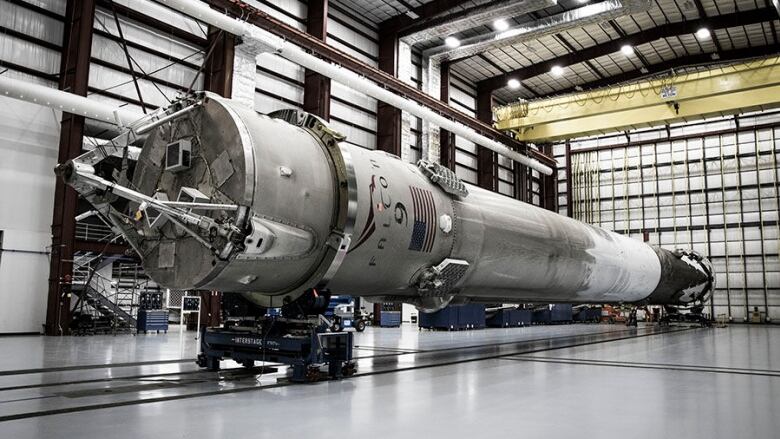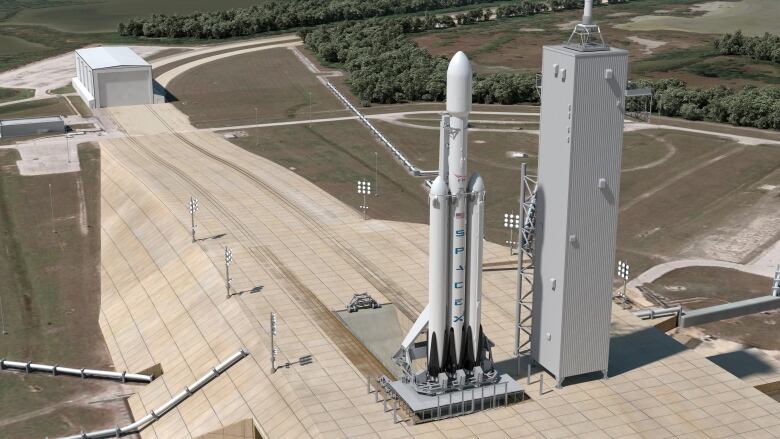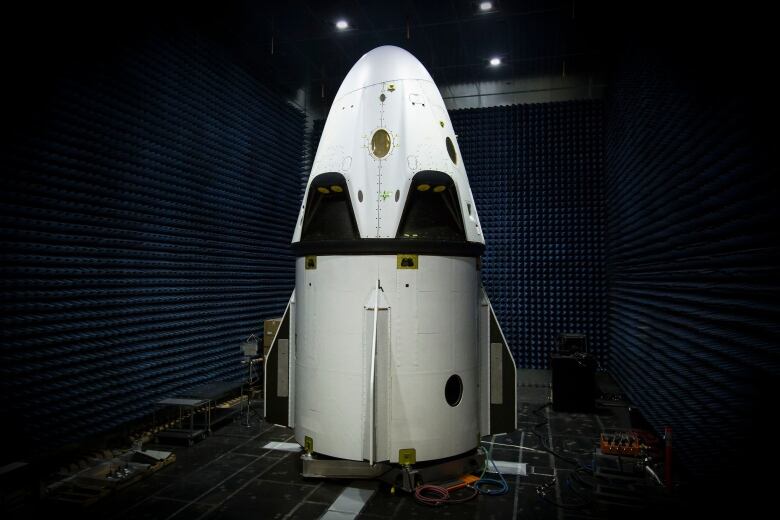Elon Musk speaks about Hyperloop, Mars mission
'Verbal agreement' on Hyperloop but a few glitches in SpaceX programs

While Elon Musk's dream of going to Mars is still a bit of a moonshot, his goal of building a high-speed Hyperloop transportation system in the U.S. is one step closer to fruition.
The founder of electric vehicle company Tesla and aerospace manufacturer SpaceXannounced through a series of tweets Thursday that his tunneling company, the Boring Company, had received verbal government approval to build an underground HyperlooplinkingNew York City, Philadelphiaand Washington, D.C.
Just received verbal govt approval for The Boring Company to build an underground NY-Phil-Balt-DC Hyperloop. NY-DC in 29 mins.
—@elonmuskSuch a construction would cover a distance of approximately 360 kilometres.
In a later tweet, Musk clarified that he has yet to receive any formal government approval, but that he is optimistic.
Still a lot of work needed to receive formal approval, but am optimistic that will occur rapidly
—@elonmuskThe Hyperloop would incorporate a series of pods travelling in an atmosphere close to an absolute vacuum.
The pods would theoretically be able to travel the distance from New York to D.C a trip that normally takes several hours to complete in fewer than 30 minutes.
Nothing loopy about travel to Mars
Musk spoke at length about his company's attempts to work its way to the Red Planet and its attempts at building better reusable rockets at the annual International Space Station Research and Development Conference (ISSR&D) in Washington, D.C., on Wednesday.
He downplayed expectations of theFalcon Heavy rocket the launch vehicle that will send crews and payloads to the Moon and then to Mars.
Musk explained that the development of the Falcon rocketis "way, way more difficult" than the engineers at SpaceXpreviously anticipated.
The Falcon Heavy, also known as the Falcon 9 Heavy, is a reusable rocket that consists of a largeFalcon 9 a reusable spacecraft designed and manufactured by SpaceX as the primary core, with two additional Falcon 9 rockets as strap-on boosters.

However, the Falcon Heavy has experienced numerous launch delays, mostly due to concerns about safety and launchpad damage.
"There's a real good chance that it does not make it to orbit," said Musk, in reference to the Falcon Heavy's test flight. "I hope it gets far enough away from the launch pad that it does not cause pad damage I would consider that a win."
The Falcon Heavy's inaugural flight is expected to take place later this year.
Propulsive landing and the Dragon 2
Musk also spoke about his company's revised plans for the Dragon 2 spacecraft the vehicle that SpaceXplans to use tosend human cargo to space and, eventually, to Mars.
The Dragon 2 was originally planned to use a series of rocket engines to slow the spacecraft's descent in order to gently land on four landing legs.
Musk, however, revealed that the Dragon 2will no longer use rockets as its primary landing manoeuvre.

Musk did not clarify what new approach his company plans on implementing to safely land the roughly 6,400 kilogram vehicle and its human crew and non-human cargo on the surface of Mars.
In a later tweet, Musk clarifiedthat SpaceX has not completely abandoned research intolanding a spacecraft on Mars using propulsive landing.
"Plan is to do powered landings on Mars for sure, but with a vastly bigger ship," said Musk, in a July 19, 2017 tweet.
Plan is to do powered landings on Mars for sure, but with a vastly bigger ship
—@elonmuskPropulsive landing has not been abandoned on the Dragon 2 either. The spacecraft will incorporate propulsive landing as a backup, in the event that the unannounced primary landing mechanisms fail.
ISSR&D is an annual industry conference hosted by the Center for Advancement of Science in Space (CASIS).












_(720p).jpg)


 OFFICIAL HD MUSIC VIDEO.jpg)
.jpg)



























































































